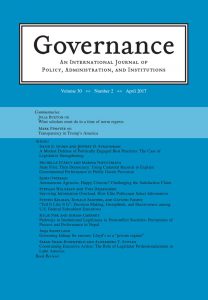Monkey finance

by Koyomiyoshi
According to this article , the Obama administration has proposed a pay limit to financial firms which will be saved by government TARP plan. This plan clearly reflects public outrage towards financial firm‘s practice of paying tremendous bonus to CEOs, which have been saved by taxpayers. Outrage centres around the fact that these bonus are excessively high in comparison to CEOs performance. The article introduces one wall street veteran saying “I could put a monkey in that chair and get a certain level of business.”
However, work performance does not necessarily depend on worker effort. You sometimes fail to improve work performance despite your effort, while your neighbour seems to always succeed without so much effort. A third person, or employer, cannot always distinguish your performance has been caused by effort or misfortune. A monkey may,
sometimes, show high performance, but it may be because he is just lucky. This article points out that the plan may discourage some able banker from working and encourage them leaving firms.
How can we design a pay system which can purge lucky monkeys and reward able workers simultaneously? According to Ferrall and Shearer, optimal incentive pay systems are too costly to implement. The employer needs keep track of all required information and compute payment under the contract. According to their estimation based on mine worker contracts, actual contract system performs ill, one-third to full information settings.
Monetary rewards does not necessariliy improve worker’s performance. Heyman and Ariely‘s experiment to compare which of following three payment method improve performance, middle payment, low payment, and no payment. Surprisingly, individuals with low payment performed worst. According to Dan Pink, the group whose pay depends on time took in solving the problem take longer than the group whose pay does not depend on solving time. These experiments have been performed in the U.S. and India. Not dependeing cultural differences, The result seems robust. This tendency is seen on only in intelectural tasks.
 Ferrall and Shearer ” Incentives and Transactions Costs Within the Firm: Estimating an Agency Model Using Payroll Records”
Ferrall and Shearer ” Incentives and Transactions Costs Within the Firm: Estimating an Agency Model Using Payroll Records”








Just to offer another suggestion…some sociologists suggest that a way to equalize pay across genders (and perhaps other forms of pay discrimination) is to offer pay based upon contribution in the workplace. Thus, earnings of CEOs and their secretaries would be more closely related as most CEOs might not know what meeting to attend without their executive assistants. Similarly, the junior colleagues who contribute to generating reports (perhaps only presented but not authored by corporate leadership) would receive greater compensation.
With pay for contribution to the firm, the TARP funds would no longer be disproportionately landing in the hands of corporate leaders and would be spread to the others within the firm as well.
Keri